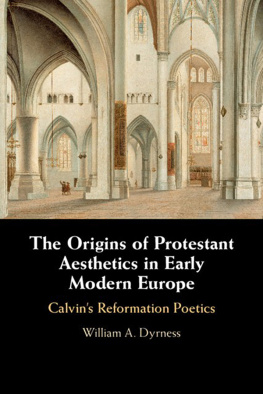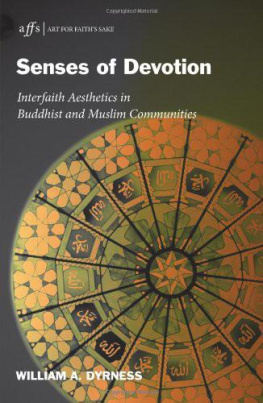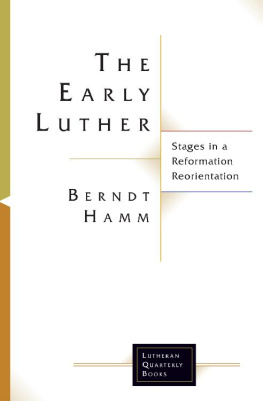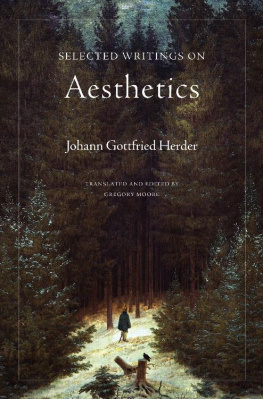The aesthetics of everyday life, as reflected in art museums and galleries throughout the Western world, is the result of a profound shift in aesthetic perception that occurred during the Renaissance and Reformation. In this book, William Dyrness examines intellectual developments in late medieval Europe, which turned attention away from a narrow range of liturgical art and practices and toward a celebration of Gods presence in creation and in history. Though threatened by the human tendency to self-assertion, he shows how a new focus on Gods creative and recreative action in the world gave time and history a new seriousness and engendered a broad spectrum of aesthetic potential. Focusing in particular on the writings of Luther and Calvin, Dyrness demonstrates how the Reformers conceptual and theological frameworks pertaining to the role of the arts influenced the rise of realistic theater, lyric poetry, landscape painting, and architecture in the sixteenth and seventeenth centuries.
William A. Dyrness is Senior Professor of Theology and Culture at Fuller Theological Seminary, California. A scholar of the art and religion of Reformation Europe, he is the author of Reformed Theology and Visual Culture: The Protestant Imagination from Calvin to Edwards and more recently, Poetic Theology, God, and the Poetics of Everyday Life.
William A. Dyrness
University Printing House, Cambridge CB 2 8 BS , United Kingdom
One Liberty Plaza, 20th Floor, New York, NY 10006, USA
477 Williamstown Road, Port Melbourne, VIC 3207, Australia
314321, 3rd Floor, Plot 3, Splendor Forum, Jasola District Centre, New Delhi 110025, India
79 Anson Road, #0604/06, Singapore 079906
Cambridge University Press is part of the University of Cambridge.
It furthers the Universitys mission by disseminating knowledge in the pursuit of education, learning, and research at the highest international levels of excellence.
www.cambridge.org
Information on this title: www.cambridge.org/9781108493352
DOI: 10.1017/9781108593311
Cambridge University Press 2019
This publication is in copyright. Subject to statutory exception and to the provisions of relevant collective licensing agreements, no reproduction of any part may take place without the written permission of Cambridge University Press.
First published 2019
Printed in the United Kingdom by TJ International Ltd. Padstow Cornwall
A catalogue record for this publication is available from the British Library .
Library of Congress Cataloging-in-Publication Data
Names : Dyrness, William A., author.
Title : The origins of Protestant aesthetics in early modern Europe : Calvins Reformation poetics / William A. Dyrness, Fuller Theological Seminary, California.
Description : 1 [edition]. | New York : Cambridge University Press, 2019. | Includes bibliographical references and index.
Identifiers: LCCN 2018058441| ISBN 9781108493352 (hardback : alk. paper) | ISBN 9781108717823 (pbk. : alk. paper)
Subjects: LCSH: Christianity and artReformed ChurchHistory16th century. | Christianity and artEuropeHistory16th century. | AestheticsReligious aspectsReformed ChurchHistory16th century | Calvin, Jean, 1509-1564.
Classification: LCC BX9423.A77 D968 2019 | DDC 261.5/7094dc23
LC record available at https://lccn.loc.gov/2018058441
ISBN 978-1-108-49335-2 Hardback
Cambridge University Press has no responsibility for the persistence or accuracy of URLs for external or third-party internet websites referred to in this publication and does not guarantee that any content on such websites is, or will remain, accurate or appropriate.
Contents
Illustrations
Preface
This book attends to the emergence of particular aesthetic attitudes that can reasonably be described as Protestant, especially in Geneva, England, and Holland, and that developed between 1500 and 1650. It may be thought anachronistic in this early modern period to describe a developing aesthetics since the word, in its modern sense, was not used before Alexander Gottlieb Baumgarten wrote his famous Aesthetica in 1750. In that work the philosopher sought to place aesthetics what he termed scientia cognitionis sensitivae , or the science of sensuous knowing along with logic, as a source of theoretical knowledge. His goal was to describe the perfection of sense knowledge as beauty itself, which he believed represented the perfected attainment of knowledge through the senses.
Baumartens formulation, however influential, was not entirely original. In fact one can argue that he is reprising conversations that were prominent in the medieval period. Thomas Aquinas, for example, describes beauty in closely related terms: Beauty has to do with knowledge, and we call a thing beautiful when it pleases the eye of the beholder. This is why beauty is a matter of right proportion, for senses delight in rightly proportioned things as similar to themselves, the sense-faculty being a sort of proportion itself like all other knowing faculties. Now since knowing proceeds by imaging, and images have to do with form, beauty properly involves the notion of form.
This danger arises from the fact that, arguably, aesthetic experience has come to play a more central role in the twenty-first century than it did in any previous century. Robert Wuthnow has documented the fact that, in America at least, each generation during the last one hundred years has been progressively more interested and invested in the arts and aesthetic experience., this wide-ranging interest in the arts and the particular institutions that have arisen to support this stands in marked contrast to the medieval situation. And, I will argue, the events consequent to the Protestant Reformation have played a considerable role in laying groundwork for the expansion of interest and attention to the arts that modern people have come to take for granted.
Though it may be anachronistic to speak of Reformation aesthetics, as Clark Hulse notes, it is a potentially useful anachronism.reductively, seeing with hearing. Rather, their more comprehensive vision of society and its accountability to God provided space for other forms of art to appear specifically, realistic theater, landscape painting, and neo-classical architecture, in addition to literature.
The danger persists in any historical reflection to read back into earlier periods attitudes and practices that developed only later. For this reason
Written by a theologian of culture rather than a historian, this work seeks to provide a fresh angle of vision on this endlessly fascinating period of history, and especially on some of its central figures Martin Luther and, in more detail, John Calvin. My argument is that their novel interpretation of the human religious situation had the additional result of expanding the attention given to the theatrum mundi , with long-term significance for aesthetics no less than for other areas of human investigation. While this broader attention to the world is often thought of as an incipient secularization, in the minds of the Reformers it was nothing of the kind. Rather, Luther and Calvin sought to extend, albeit in different ways, the accountability one owed to God more broadly to their life in the world. This enlarged sense of responsibility and the attention it sparked, I will argue, led both directly and indirectly to development in the arts.











